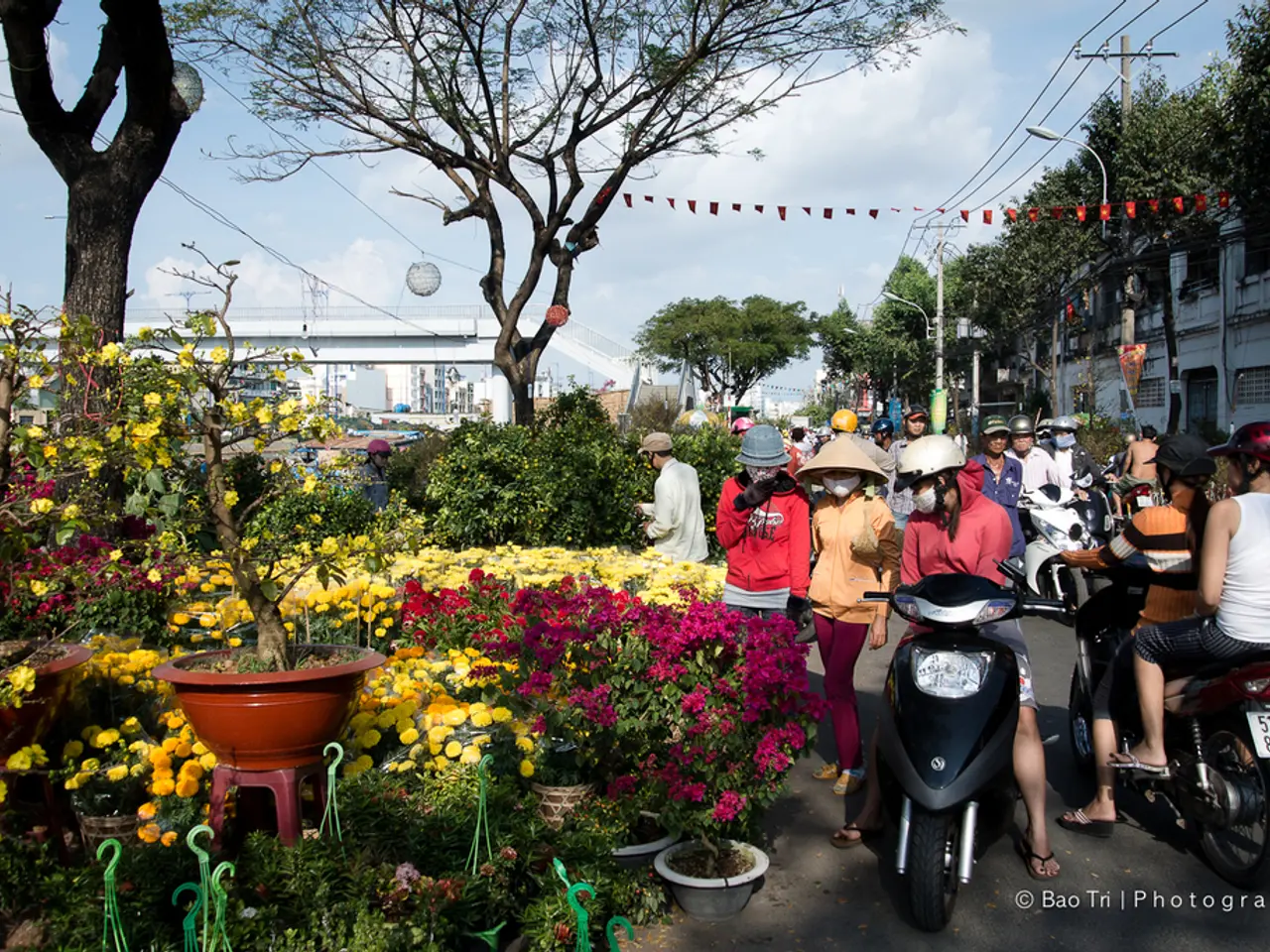Green Equipment for Eco-Conscious Hiking Excursions in National Parks
In the spirit of preserving our natural wonders, eco-conscious adventurers are increasingly turning to sustainable equipment for their outdoor activities. Here's a guide to some of the best eco-friendly camping gear options that minimise environmental impact in national parks.
Tents
Choosing a tent made from recycled or environmentally conscious materials is key. The North Face Eco Trail 2, made from 100% recycled polyester with PFAS-free waterproofing, and the Kelty Discovery Basecamp 4 using solution-dyed fabrics, are excellent choices for minimising ecological footprint. Tents made from recycled plastics, such as the Eurohike Gaia IV XLP Eco Tent, support plastic reuse and reduction.
Ultralight Gear
Ultralight backpacking gear, like the Zpacks Plex Solo tent, Feathered Friends Flicker UL sleeping bag, and lightweight water reservoirs, enhance sustainability by reducing overall load and resource use on the trail.
Reusable Consumables
Using reusable camp cooking utensils, plates, and cups, like those from HydroFlask, further reduces disposable waste in protected natural areas. Following Leave No Trace principles reinforces choosing gear and practices that minimise damage.
Power Needs
Solar-powered devices for charging or lighting offer a clean energy alternative in the outdoors, avoiding batteries or fuels that can pollute.
Battery Banks
Eco-friendly battery banks, such as the Anker 521 PowerHouse, use lithium iron phosphate (LiFePO4) cells for safer, longer-lasting, and more sustainable energy storage.
Manufacturing and Supply Chain
Choosing gear made closer to home, such as Appalachian Gear Company's ultralight layers made from alpaca fiber in the United States, helps reduce carbon emissions associated with long-distance shipping. The bluesign® certification is a respected standard for sustainable textiles, ensuring minimal environmental impact during manufacturing and responsible chemical management. Supporting companies that prioritise fair wages and ethical working conditions contributes to the sustainability of the entire supply chain.
Waste Management
Specialized waste kits, like the Restop 2 disposable toilet bags, offer hygienic and eco-safe methods for managing human waste. Brands like Bambu and EcoSoul promote these products as compostable, making them ideal for short camping trips with minimal waste output.
Partnerships and Initiatives
Many manufacturers now offer PFAS-free waterproof gear, like those from Patagonia and VAUDE, which use non-fluorinated DWR coatings. Some gear manufacturers partner with initiatives to inform buyers about how their products align with conservation goals, fostering a culture of respect for public lands.
Conclusion
Prioritising gear made from recycled or renewable materials, designed to be lightweight and durable, alongside reusable consumables and sustainable practices, is key to eco-friendly camping in national parks. By making conscious choices, we can ensure that our love for the outdoors doesn't come at the expense of our natural world.
- Camping trips in national parks are becoming more eco-friendly as adventurers opt for sustainable equipment.
- The North Face Eco Trail 2 tent, made from recycled polyester, is a recommended option for minimizing environmental impact.
- The Kelty Discovery Basecamp 4 uses solution-dyed fabrics, another smart choice for reducing ecological footprint.
- Tents made from recycled plastics, such as the Eurohike Gaia IV XLP Eco Tent, are useful for supporting plastic reuse and reduction.
- Ultralight backpacking gear reduces overall load and resource use, enhancing sustainability in the outdoors.
- Reusable camp cooking utensils, plates, and cups further reduce disposable waste in protected natural areas.
- Following Leave No Trace principles reinforces eco-friendly gear and practices that minimize damage.
- Solar-powered devices for charging or lighting provide a clean energy alternative while avoiding fuel pollution.
- Eco-friendly battery banks, like the Anker 521 PowerHouse, use lithium iron phosphate (LiFePO4) cells for safer, longer-lasting, and sustainable energy storage.
- Choosing gear made closer to home, like Appalachian Gear Company's alpaca fiber layers, helps reduce carbon emissions associated with long-distance shipping.
- Brands like Bambu and EcoSoul offer compostable waste kits, promoting eco-safe methods for managing human waste.
- Partnerships between gear manufacturers and conservation initiatives help inform buyers about eco-friendly products that align with conservation goals.
- Companies using non-fluorinated DWR coatings, such as Patagonia and VAUDE, offer PFAS-free waterproof gear.
- Eco-conscious adventurers prioritize gear made from recycled or renewable materials, lightweight and durable for sustainable camping.
- Reusable consumables and sustainable practices ensure that our love for the outdoors doesn't harm our natural world.
- Supporting companies that prioritize fair wages and ethical working conditions contributes to the sustainability of the entire supply chain.
- Solar energy is a clean alternative to batteries or fuels that can pollute the environment.
- The practices of sustainable outdoor living can contribute to renewable energy, climate-change mitigation, and the preservation of the ecosystem.
- Outdoor-living, home-and-garden, business, careers, education, learning, and lifelong learning all intersect with eco-friendly camping and the environment.
- Adopting sustainable camping practices supports the growth of eco-friendly industries, such as renewable energy, environmental science, data and cloud computing, and sustainable living, allowing individuals to make a positive impact on the environment while enjoying their love for nature and adventure.




